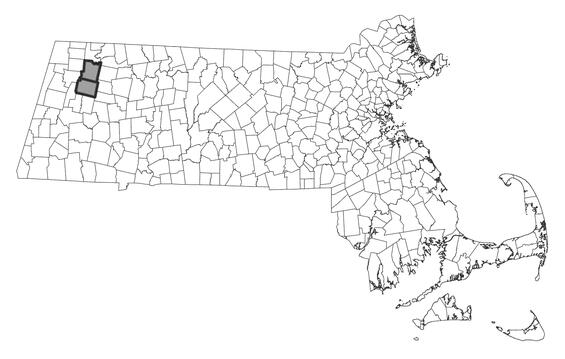- Scientific name: Platanthera aquilonis
- Species of Greatest Conservation Need (MA State Wildlife Action Plan)
Description
North wind bog orchid, Platanthera aquilonis, is a widespread North American species, which until recently was confused with northern green orchid (P. hyperborea), which occurs in Greenland. Both of these species are perennial wildflowers of moist woods or bogs and have variously been lumped as one species with two varieties or as two species. This species is similar to, and might also be confused with, P. dilatata, leafy white orchid. North wind bog orchid has several lanceolate to oblanceolate leaves, gradually reduced in size below the flowering stalk where they pass into bracts. Plants are 5-60 cm (2-24 in) high. The flowering stalk is compact with many erect or appressed green or greenish-white scentless flowers. This species may self-pollinate with assistance from water droplets, as well as be cross-pollinated by mosquitoes.
Life cycle and behavior
North wind bog orchid is a perennial species. Flowering plants may be observed from June through September. Seed capsules will produce thousands of seeds each which are wind dispersed. Each plant has a vertical tuber below ground with a couple of fleshy roots that travel horizontally in the soil. The plant will completely replace all of these from one year to the next. It has a relationship with a mycorrhizal fungus that will help the seed to germinate and continues to supplement the plant throughout its life.
Population status
North wind bog orchid is a species of greatest conservation need and is maintained on the plant watch list. It is known from the western part of the state, in Franklin, Hampshire, Hampden, and Berkshire Counties.

Distribution in Massachusetts. 1999-2024. Based on records in the Natural Heritage Database
Distribution and abundance
Nationally, this species has a broad range extending primarily across northern North America from Newfoundland, south to New Jersey, into the southwest US in New Mexico and Arizona, and up to Alaska. Regionally, it has declined so that it is considered vulnerable in Massachusetts, critically imperiled in Pennsylvania, and presumed extirpated in Ohio. It has not been ranked in other New England states.
Habitat
North wind bog orchid typically is found in rich wetlands and seeps, swamps, edges of streams, meadows, and fields, and may occur in historically disturbed sites.
Healthy habitats are vital for supporting native wildlife and plants. Explore habitats and learn about conservation and restoration in Massachusetts.
Threats
The primary threats to north wind bog orchid are not known but may include changes in hydrology, climate change, and shading due to an increase in canopy cover. As with many of the showy orchids, deer browse on flowers may severely restrict their ability to reproduce. Collection of flowering plants, trampling, and off-road vehicles may further compromise the species. In addition, as with all orchids, it is reliant on its association with mycorrhizal fungus, which if destroyed or damaged will impact this species.
Conservation
North wind bog orchid is a relatively newly described orchid. Most of the reports to the NHESP database so far have been the result of incidental observations. Few populations have been resurveyed. As with many orchids, plants do not appear above ground each year, so getting accurate estimates of the populations is difficult. Additional resurveys are needed, and multiple surveys may be needed in one year to relocate plants. The best time to survey is when plants are in bloom, mid-June to the end of September.
The specific ecological needs of the north wind bog orchid are not known. It is suggested that the species might need some light disturbance, partially open canopy, and unaltered hydrology. All active management of rare plant populations (including invasive species removal) is subject to review under the Massachusetts Endangered Species Act and should be planned in close consultation with the MassWildlife’s Natural Heritage & Endangered Species Program.
The exact ecological needs of this species are not well understood. As this plant is under-surveyed, more standard information is needed such as lists of associated species, comments on habitat quality and threats, and assessments of soil conditions and phenology. The specific mycorrhizae fungi that support this species need to be identified, and more information regarding that species is needed as well. It is not known how changes in climate might affect this species.
References
Gleason, H.A. and A. Cronquist. 1991. Manual of Vascular Plants of Northeastern United States and Adjacent Canada, Second Edition. The New York Botanical Garden, Bronx, New York.
Haines, A. 2011. Flora Novae Angliae. The New England Wild Flower Society. Yale University Press, New Haven, CT.
NatureServe. 2025. NatureServe Network Biodiversity Location Data accessed through NatureServe Explorer [web application]. NatureServe, Arlington, Virginia. Available https://explorer.natureserve.org/. Accessed: 4/30/2025.
POWO (2025). Plants of the World Online. Facilitated by the Royal Botanic Gardens, Kew. Published on the Internet; https://powo.science.kew.org/ Accessed: 4/30/2025.
Sheviak, C.J. 2003. Platanthera in Flora of North America. Editorial Committee, editors. Flora of North America, Volume 26, Page 555. Oxford University Press, New York, New York.
Sheviak, C.J. 2001. A role for water droplets in the pollination of Platanthera aquilonis (Orchidaceae). Rhodora 103 (916): 380–386.
Smith, Welby R. 2012. Native Orchids of Minnesota. University of Minnesota Press, Minneapolis MN.
Contact
| Date published: | May 12, 2025 |
|---|